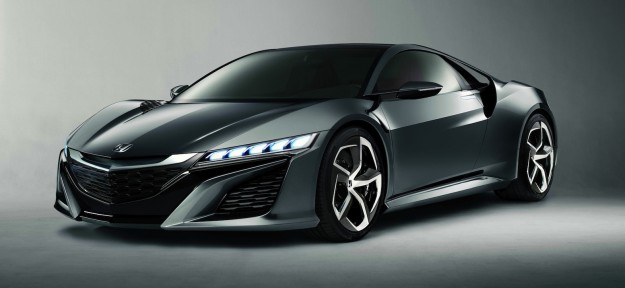The all-new Honda NSX will be powered by a hybrid-assisted twin-turbocharged V6 engine when it makes its anticipated local arrival in 2016.
On display in mock-up form at this week’s Tokyo motor show, the Honda NSX powertrain is now confirmed to comprise a twin-turbocharged V6 petrol engine, three electric motors, a lithium ion battery, and a dual-clutch transmission.
Teamed with Honda’s Sport Hybrid SH-AWD (Super Handling All-Wheel Drive) torque vectoring all-wheel-drive system, the transmission will reportedly have “more than” six ratios, though, whether it will be seven or eight is purportedly yet to be decided.

Apart from surprising many with its use of forced induction, the motor show mock-up also reveals the engine will be longitudinally mounted rather than transversely as seen in the first-generation NSX.
Honda has used this layout before, however, with the company’s Super GT NSX racer employing the same configuration between 2003 and 2009.
Honda’s chief engineer and head of drivetrain development, Hideki Wakamatsu, told Edmunds that the switch to longitudinal from a transverse layout only happened recently after extensive testing, but that it would not delay the supercar’s targeted 2015 on-sale date.
Confirmation of the NSX’s turbocharged powertrain comes directly after the Japanese manufacturer’s Tokyo motor show unveiling of its new line of 1.0-, 1.5- and 2.0-litre turbocharged VTEC petrol engines.
The car maker’s move to turbo technology will also be seen with the all-new Honda Civic Type-R – powered by a turbocharged 2.0-litre four-cylinder producing “at least” 206kW and 400Nm – and with Honda supplying turbocharged 1.6-litre V6 engines to McLaren in its 2014 return to Formula One.
Seen in revised concept form at last year’s Detroit auto show, Honda Australia confirmed the NSX will reach local showrooms within the next three years back in September, following its 2015 production start date.
Powered by a 200kW/280Nm naturally aspirated 3.0-litre V6 and weighing 1350kg, the first-generation NSX was discontinued in 2005.





